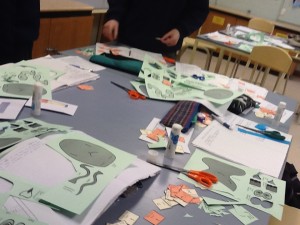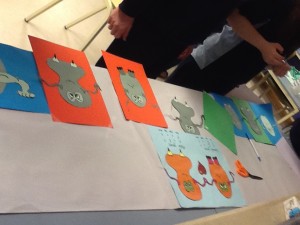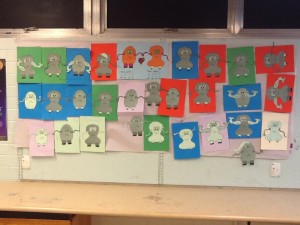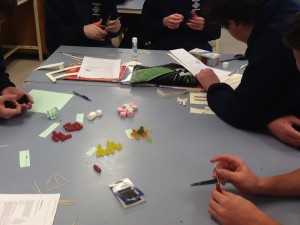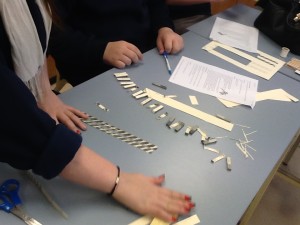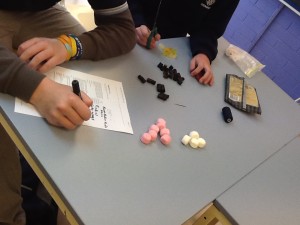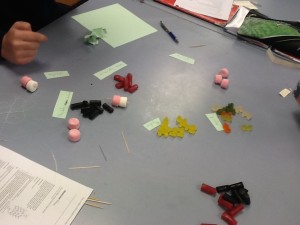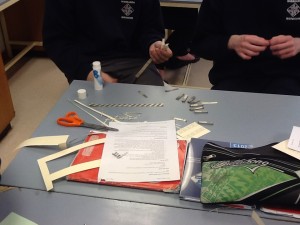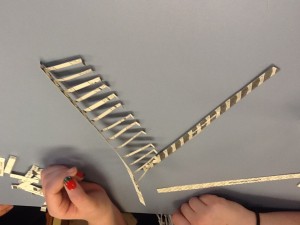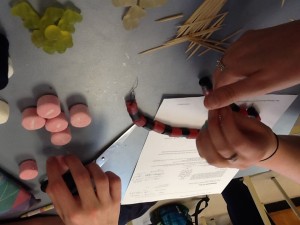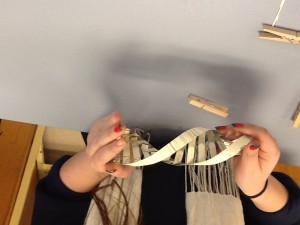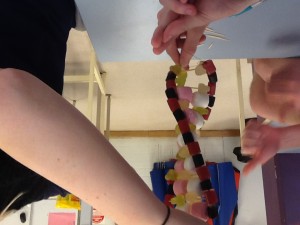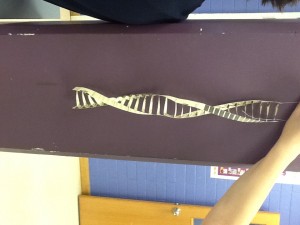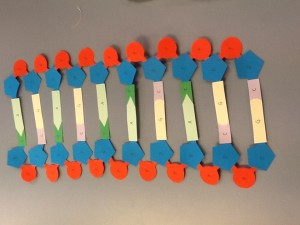Stage 1 Physics: Just a straight forward tutorial type session where students worked on questions around electrostatics and I modeled some problem solving techniques.
10 F Science: Today we did the following a phenotype caused by multiple genes through a family activity. I modified the activity to use m&ms as the markers. Of the class all but one did the task sensibly before eating the m&ms and most were able to identify which family members had high, medium and low risk of heart disease. So more or less a result this time around.
8 Science: Replacing body tissues – following on from our joint dissection I set the class the task of discussing the properties of the different types of tissues and then researching materials that matched those properties. We’re thinking about how we can live forever. About half the class got the whole point of the activity but everyone in the class put some thought into the properties of the tissues and published their thinking and findings in the classroom.
We then watched the start of a video – the part that discussed the circulatory system as that’s where we’re heading next…
10 B Science: Gattaca. I think the class were as enthralled with this as I am every time I watch it. It’s part of the process for the students to develop their own position on genetic engineering – an ethical statement. Next week I give them an aspect of genetic engineering to go into in depth and share with the class.
10 F: Gattaca. Similar reasons to the previous class but expectations are a bit different. I’ll need to provide a bit of thinking scaffolding for this class. They only got to see 30 minutes and there were only four of them today! They seemed to be involved.
Stage 2 Physics Tutorial: Reviewed atomic and nuclear structure and applications of radiation. I passed out some previous tests for the group to use for revision purposes and we demonstrated half life by tossing 200 coins and eliminating the heads and repeating – gave us a good half life graph and they worked out the average half life for the coins.
![IMG_1326[1]](https://colingrace.edublogs.org/files/2013/08/IMG_13261-2gokcvv-300x225.jpg)
![IMG_1327[1]](https://colingrace.edublogs.org/files/2013/08/IMG_13271-w67zrr-300x225.jpg)
![IMG_1328[1]](https://colingrace.edublogs.org/files/2013/08/IMG_13281-2jv1kn1-300x225.jpg)
![IMG_1329[1]](https://colingrace.edublogs.org/files/2013/08/IMG_13291-11begc3-300x225.jpg)
![IMG_1323[1]](https://colingrace.edublogs.org/files/2013/08/IMG_13231-1wqiocp-300x225.jpg)
